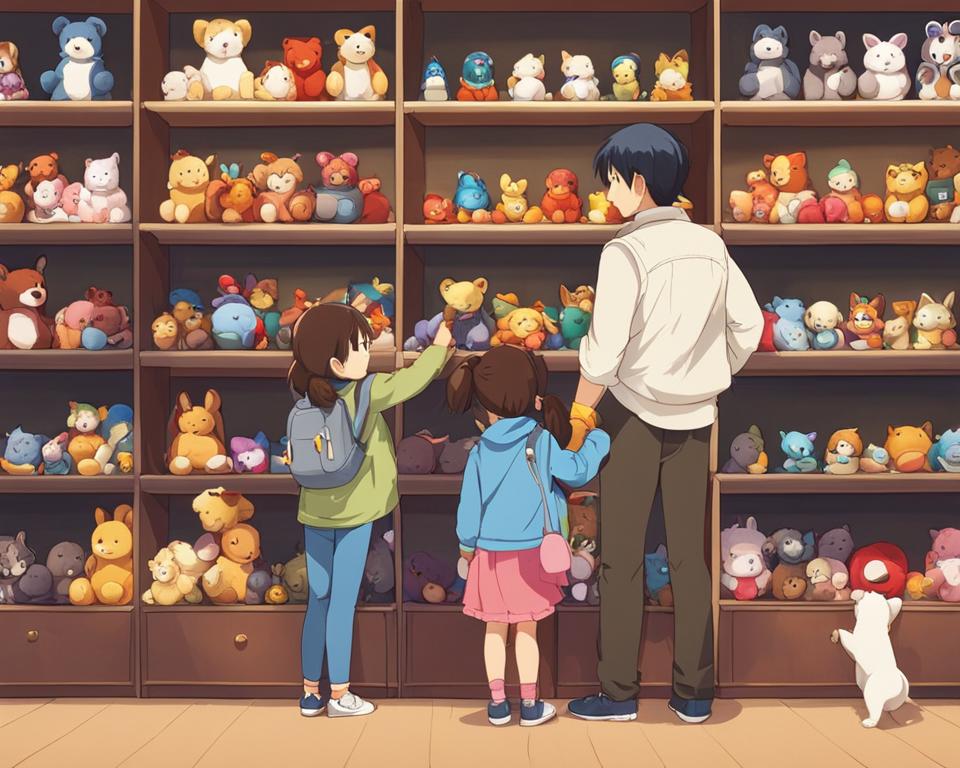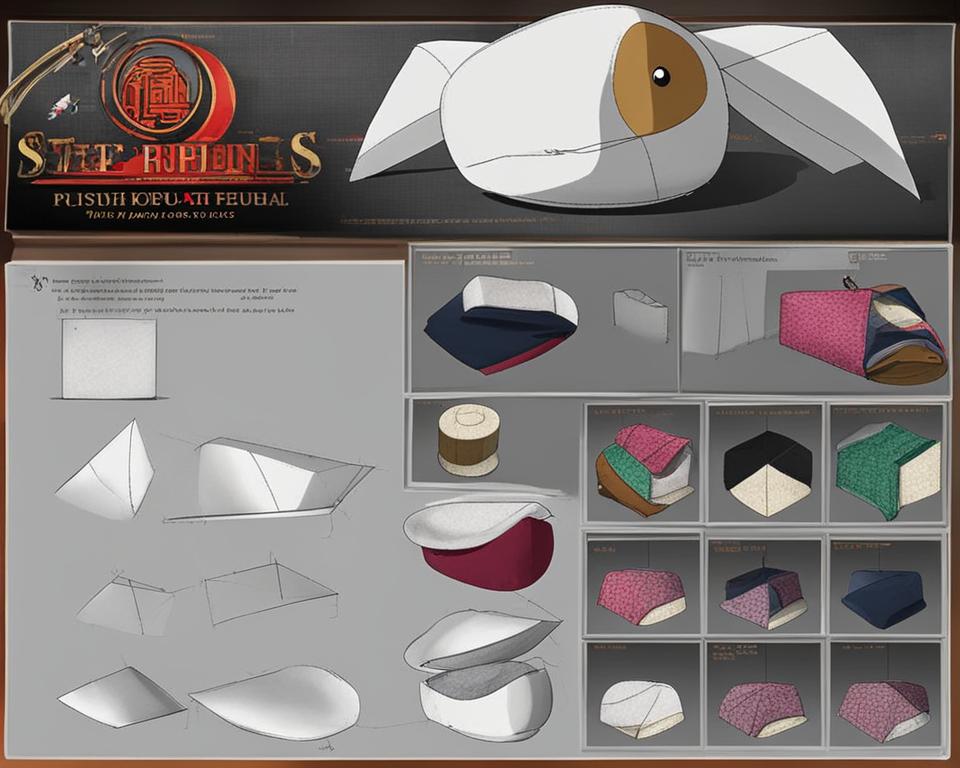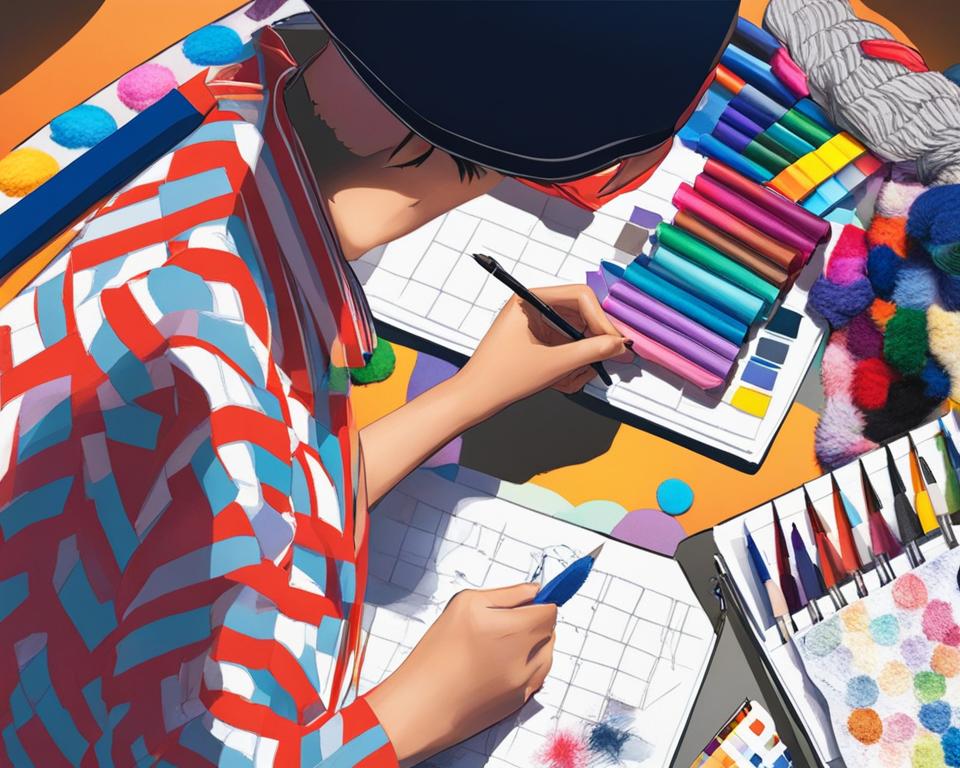Welcome to this plush toy making tutorial where I will guide you through the process of creating your own adorable soft toys. Making plush toys is not only a creative and enjoyable activity but also allows you to personalize your designs according to your preferences. Whether you are a beginner or have some crafting experience, this step-by-step guide will provide you with all the essential instructions to bring your plush toy creations to life.
Key Takeaways:
- Making plush toys allows you to create custom-made designs.
- Plush toys play a vital role in a child’s development, aiding in social and emotional growth.
- When choosing plush toys, consider age-appropriateness, safety, and materials used.
- Follow handy tips and techniques in plush toy crafting for high-quality results.
- Making your own plush toys is a fun and rewarding activity with endless possibilities.
Benefits of Making Plush Toys for Early Development
Making plush toys goes beyond the joy of creating something with your own hands. Plush toys play an important role in a child’s development, aiding in the development of social and emotional skills. By engaging in the process of making plush toys, children can explore their creativity, enhance their fine motor skills, and practice problem-solving. Additionally, playing with plush toys can promote sensory and emotional growth, providing comfort and companionship for young children.
Through the process of designing and sewing their own plush toys, children can express their imagination and creativity. They can choose different fabrics, colors, and shapes, allowing them to develop their own unique style. This creative freedom encourages self-expression and empowers children to take ownership of their creations, boosting their confidence and self-esteem. Moreover, as children engage in the tactile experience of working with different textures and materials, they stimulate their senses and develop their fine motor skills, improving hand-eye coordination and dexterity.
Plush toys also offer emotional support and companionship to children. They can become cherished companions, providing comfort and a sense of security. Often, children form deep emotional connections with their plush toys, using them as outlets for self-expression and as confidants when they need someone to share their thoughts and emotions with. This nurturing bond with their plush toys encourages children to develop empathy, compassion, and emotional intelligence as they learn to care for and understand the needs of their soft companions.
Promoting Sensory and Emotional Growth
The softness and tactile nature of plush toys offer a soothing and calming effect on children, promoting relaxation and reducing stress. The act of cuddling and hugging their plush toys can release feel-good hormones, such as oxytocin, which helps regulate emotions and create a sense of comfort and security. This emotional connection with their plush toys gives children an anchor during times of distress or transition, providing a safe space to express and process their feelings.
Furthermore, plush toys can serve as tools for teaching emotional regulation and empathy. Children can role-play with their plush toys, exploring different emotions and scenarios, and learning how to deal with various situations. This imaginative play helps them develop their social skills and understand the perspectives and feelings of others. Additionally, plush toys can be used as props for storytelling and imaginative play, fostering creativity and narrative skills.
In conclusion, making plush toys offers a multitude of benefits for a child’s early development. From enhancing creativity and fine motor skills to promoting sensory and emotional growth, plush toys provide children with a nurturing and enriching experience. The bond formed with their handmade creations fosters a sense of pride and ownership, while the comfort and companionship offered by the plush toys support emotional well-being. So, unleash your creativity and embark on the journey of making your own plush toys, creating cherished companions for your little ones.
Choosing the Right Plush Toys: Factors to Consider
When it comes to selecting plush toys for your child, there are several important factors to consider. Ensuring that the plush toys you choose are safe, age-appropriate, and hygienic is crucial for your child’s well-being.
Evaluating Safety Features
- Age appropriateness: Consider the recommended age range for the plush toy to ensure it is suitable for your child’s developmental stage.
- Stitching and construction: Examine the toy for secure and tightly stitched seams to minimize the risk of small parts coming loose.
- Non-toxic materials: Opt for plush toys made from hypoallergenic and non-toxic materials to safeguard children with allergies or sensitivities.
Maintaining Hygiene
Keeping plush toys clean is essential for maintaining good hygiene. Regularly washing and sanitizing them prevents the accumulation of germs and allergens. Follow these hygiene practices:
- Read the manufacturer’s instructions: Check if the plush toy is machine washable or should be cleaned by hand.
- Use mild detergent: Wash the toy in a gentle cycle using mild soap or baby detergent.
- Air dry: Allow the plush toy to air dry completely to avoid any damage from heat or tumbling.
Expert Recommendations
“When choosing plush toys for children, it’s important to prioritize safety and hygiene. Look for toys that are age-appropriate, well-constructed, and made from non-toxic materials. Additionally, remember to regularly clean and sanitize plush toys to ensure a healthy play environment for your child.”
– Dr. Emily Thompson, Pediatrician
| Factors to Consider | Importance |
|---|---|
| Age appropriateness | High |
| Stitching and construction | High |
| Non-toxic materials | High |
| Hygiene maintenance | High |

By considering these factors and following expert recommendations, you can confidently choose the right plush toys for your child. Prioritizing safety, age-appropriateness, and hygiene ensures that your child can enjoy their plush toys while fostering their imagination and playfulness.
Handy Tips and Techniques for Plush Toy Crafting
When it comes to plush toy crafting, there are several tips and techniques that can help you create high-quality and visually appealing creations. Whether you’re a beginner or have some experience in sewing, these tips will enhance your plush toy making process.
Choosing the Right Patterns and Designs
One of the first steps in plush toy crafting is choosing the right patterns and designs. You can find numerous free patterns online or create your own. Consider the complexity of the design and the level of difficulty you’re comfortable with. Pay attention to the size of the pattern and ensure it suits your desired plush toy dimensions.
Additionally, think about the aesthetic you want to achieve. Experiment with different shapes, colors, and textures to add interest and uniqueness to your plush toy. Don’t be afraid to let your creativity shine through!
Mastering Plush Toy Sewing Techniques
The sewing techniques you use will greatly impact the quality of your plush toys. Start by choosing the right type of stitch for your project. A simple running stitch or a backstitch is typically sufficient for most plush toys. Consider using a smaller stitch length to ensure durability and prevent stuffing from poking through.
It’s also important to sew in the correct order. Start with sewing the main body pieces together, leaving an opening for stuffing. Once the body is sewn, stuff it firmly with polyester fiberfill or your preferred stuffing material. Finally, close the opening using a whipstitch or ladder stitch for an invisible finish.
Paying Attention to Details
Details can make all the difference in giving your plush toy that extra touch of charm. Securely attach eyes, noses, and other features using safety eyes or stitching them in place. Consider using contrasting thread colors to highlight features or add embroidered details for a personalized touch.
Furthermore, think about adding unique touches to your plush toy, such as fabric painting or adding small accessories like bows or buttons. These details will enhance the overall aesthetic and make your plush toy truly one-of-a-kind.
By following these handy tips and techniques, you’ll be well on your way to creating beautiful and professional-looking plush toys. Remember to have fun, embrace your creativity, and enjoy the process of bringing your plush toy creations to life!
Conclusion
Making your own plush toys can be a delightful and fulfilling endeavor. By following the step-by-step instructions provided in this tutorial, you now have the knowledge and skills to create your own unique soft toys. Whether you have a specific design in mind or simply want to enjoy the process of crafting by hand, learning how to make plush toys opens up a world of creativity and limitless possibilities.
Whether you’re making a personalized gift for a loved one or simply indulging in a creative outlet, the joy of designing and sewing your own plush toys is immeasurable. From gathering the necessary materials to adding the finishing touches, every step of the process allows you to infuse your creations with your personal touch and style.
So, don’t hesitate to gather your materials, unleash your imagination, and embark on a journey of plush toy making. With each adorable creation, you’ll not only hone your crafting skills but also experience the satisfaction of bringing your designs to life. Now that you know how to make plush toys, it’s time to let your creativity soar and create plushies that will bring joy to both children and adults alike.
FAQ
Why should I make my own plush toys?
Making your own plush toys allows you to create custom-made designs that match your preferences and unique style.
How can making plush toys benefit a child’s development?
Making plush toys can enhance a child’s creativity, fine motor skills, problem-solving abilities, and promote sensory and emotional growth.
What factors should I consider when choosing plush toys for children?
When choosing plush toys, consider their age-appropriateness, safety features such as softness and well-stitching, hypoallergenic and non-toxic materials, and the importance of regular washing and cleaning.
Are there any tips and techniques for creating high-quality plush toys?
Yes, selecting the right patterns and designs, using proper sewing techniques, paying attention to details, and experimenting with fabrics and colors can all contribute to the quality and aesthetic of your plush toys.
How do I start making my own plush toys?
Follow the step-by-step instructions provided in this tutorial to gather the necessary materials, design and sew your plush toy, and bring your creations to life.





